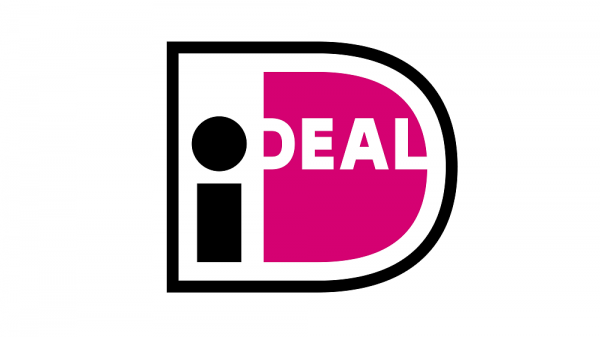By Gillian Vogelsang-Eastwood, 9 April 2024
A few days ago (Saturday 6th April) we had a really interesting, pleasant and intriguing meeting in Leiden with Polish colleagues about medieval Christian wall paintings from Nubia (northern Sudan and southern Egypt), and about the role and the future of the TRC and textile studies in general. Dr. Karel Innemée , a TRC Board member, professional archaeologist and textile/dress specialist working in Egypt and Sudan, and at present an assistant professor at the University of Warsaw, brought the Polish group to see the TRC.
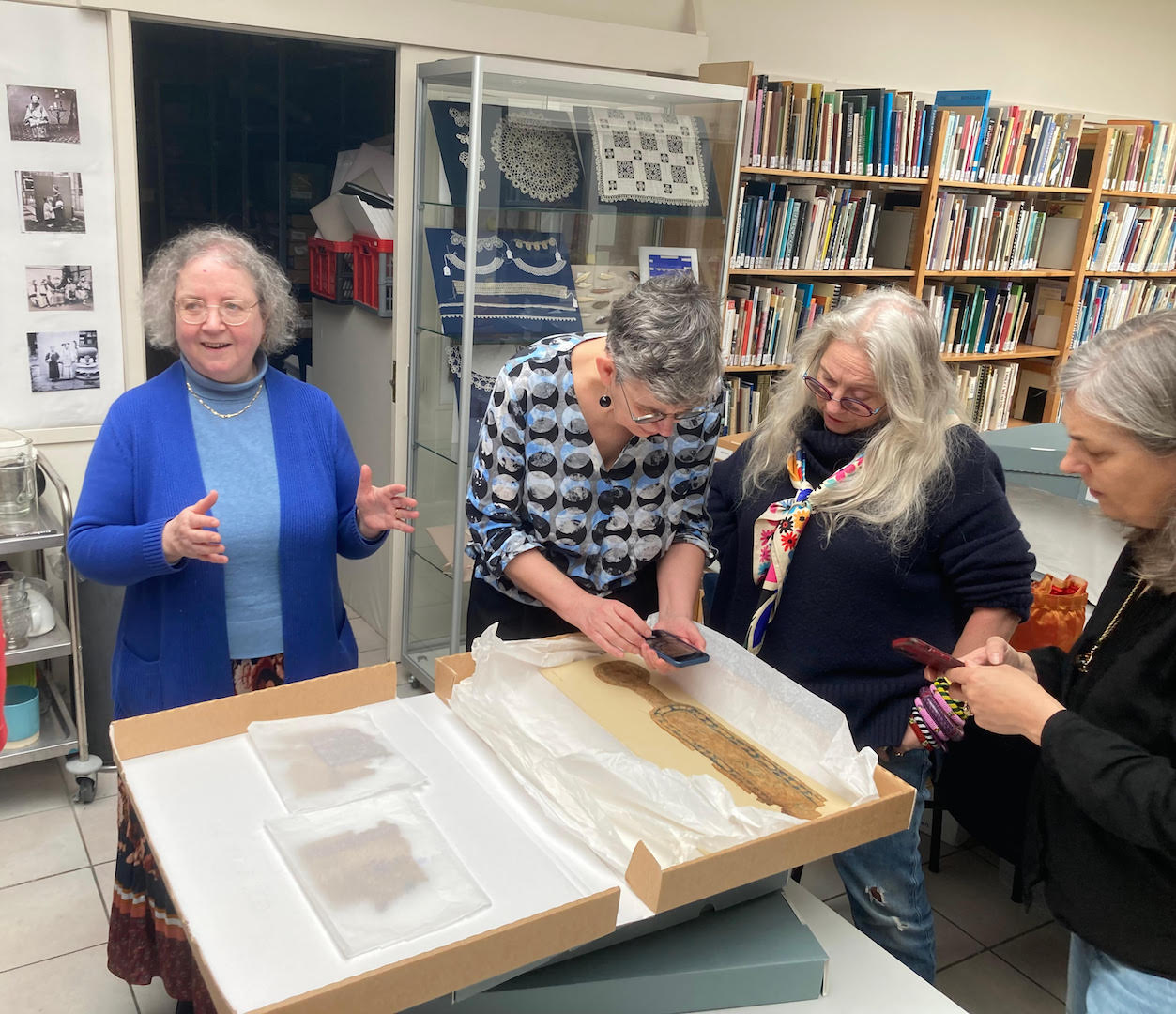 Polish delegation visits the TRC, 6 April 2024
Polish delegation visits the TRC, 6 April 2024
The group consisted of Dr Agnieszka Jacobson, the Dean of the Design Department of the SWPS University of Social Sciences and Humanities (Warsaw), and Dr Dobrochna Zielinska from the Faculty of Archaeology department of the University of Warsaw. A good example of an inter-departmental/university project! Other members of the group were Dorothée Roquepulo, a costumier for theatre and films and Paulina Matusiak, who is a photographer and lives in the Netherlands. They are all working together on a project called ‘Costumes of Authority: Images of Royalty and Clergy in Christian Nubia.’
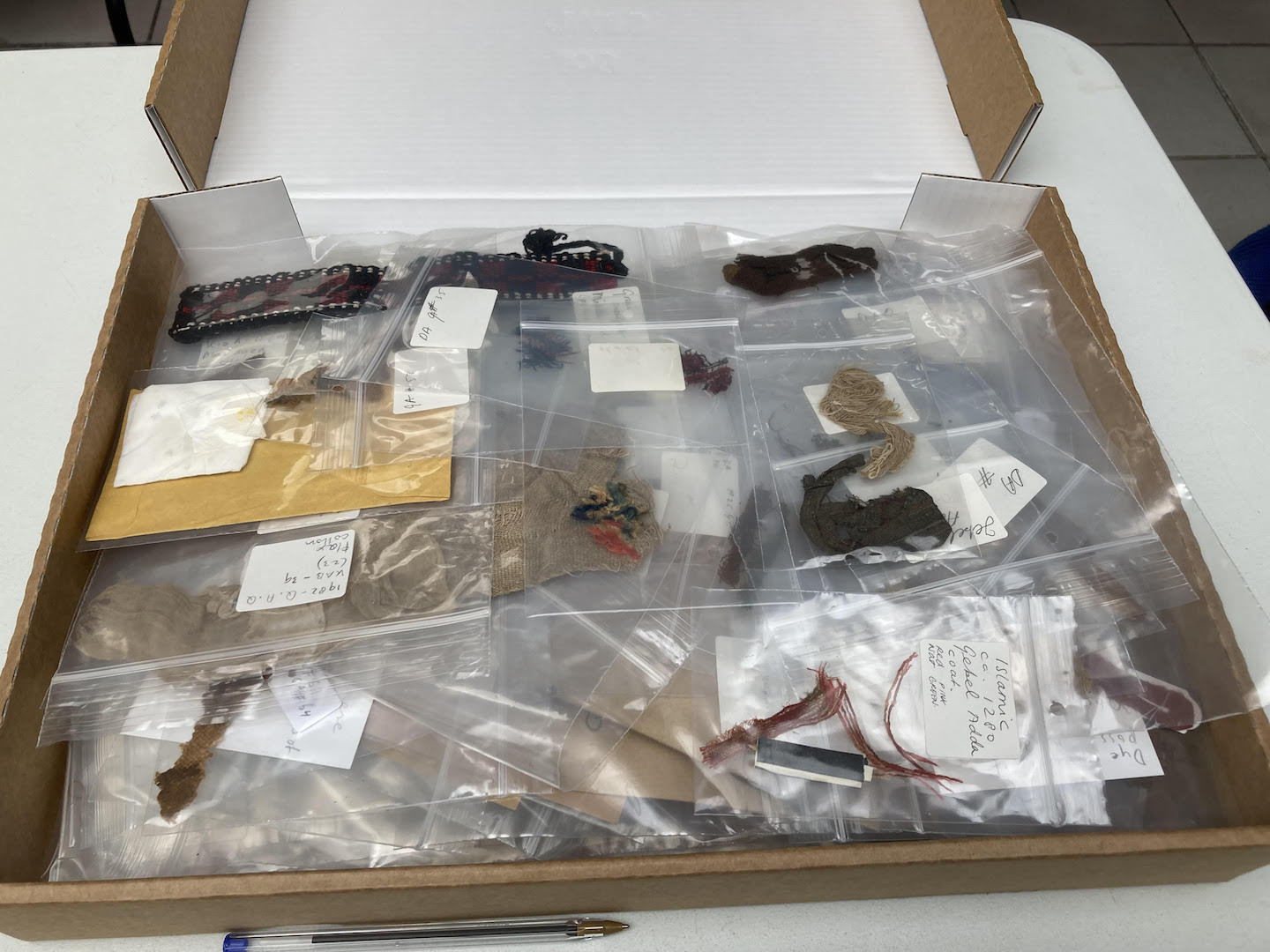 Fragments of textiles from Jebel Adda and Qasr Ibrim, first millennium and early second millennium AD, intended for fibre and dye analysis, from the TRC collection.The aim is to bring back to life the clothing depicted in a series of c. 10th century wall paintings from the medieval Christian Cathedral in Faras, in Nubia in southern Egypt, which were rescued during the UNESCO archaeological campaigns of the 1960s associated with the building of the Aswan High Dam and the creation of Lake Nasser; an immense engineering feat that however resulted in the destruction of numerous historic settlements and sites. The Polish archaeological community was involved in the work at Faras and as a result a number of the frescos were re-located to Warsaw.
Fragments of textiles from Jebel Adda and Qasr Ibrim, first millennium and early second millennium AD, intended for fibre and dye analysis, from the TRC collection.The aim is to bring back to life the clothing depicted in a series of c. 10th century wall paintings from the medieval Christian Cathedral in Faras, in Nubia in southern Egypt, which were rescued during the UNESCO archaeological campaigns of the 1960s associated with the building of the Aswan High Dam and the creation of Lake Nasser; an immense engineering feat that however resulted in the destruction of numerous historic settlements and sites. The Polish archaeological community was involved in the work at Faras and as a result a number of the frescos were re-located to Warsaw.
The present project is concerned with “learning more about the nature of the relationship between Church and State, external sources of influence and indigenous traditions”. More specifically, using the Faras images, the Project looks in detail at the elaborately decorated garments worn by Christ, the Virgin, clergy, as well as members of the royal family from the kingdom of Makuria, one of the Christian kingdoms of Nubia between the 6th and 14th century.
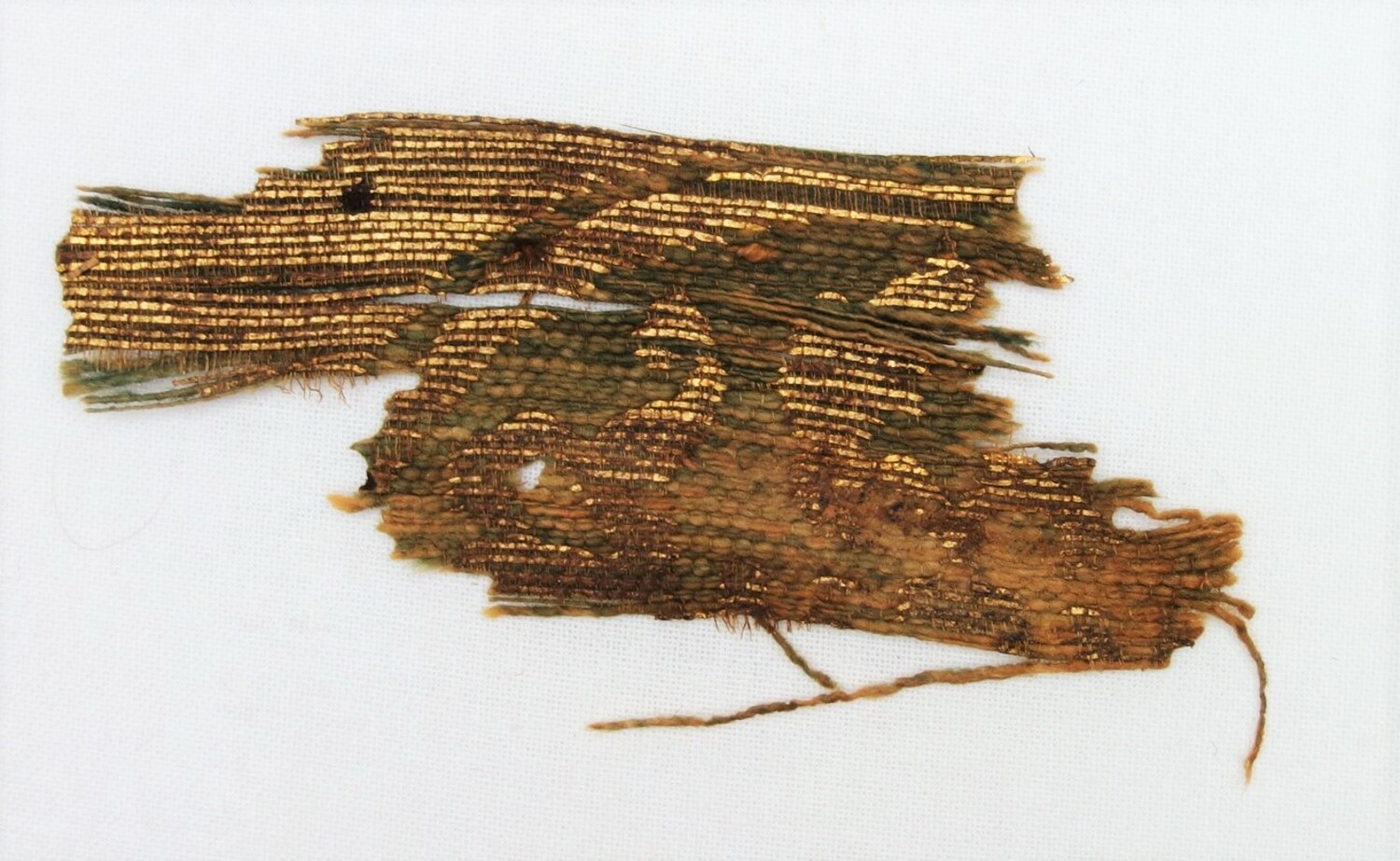
Part of the project involves identifying the garments depicted, how they were made and decorated, how they were worn, and indeed what the the garments and outfits mean and symbolise. There will be a catalogue of the paintings, as well as recreation of the garments – hence the special trip to the TRC in Leiden.
Thanks to the American textile archaeologist, Nettie Adams, some years ago the TRC was given a collection of small textile samples from Gebel Adda in Nubia in southern Egypt and an important settlement with close connections with Faras.
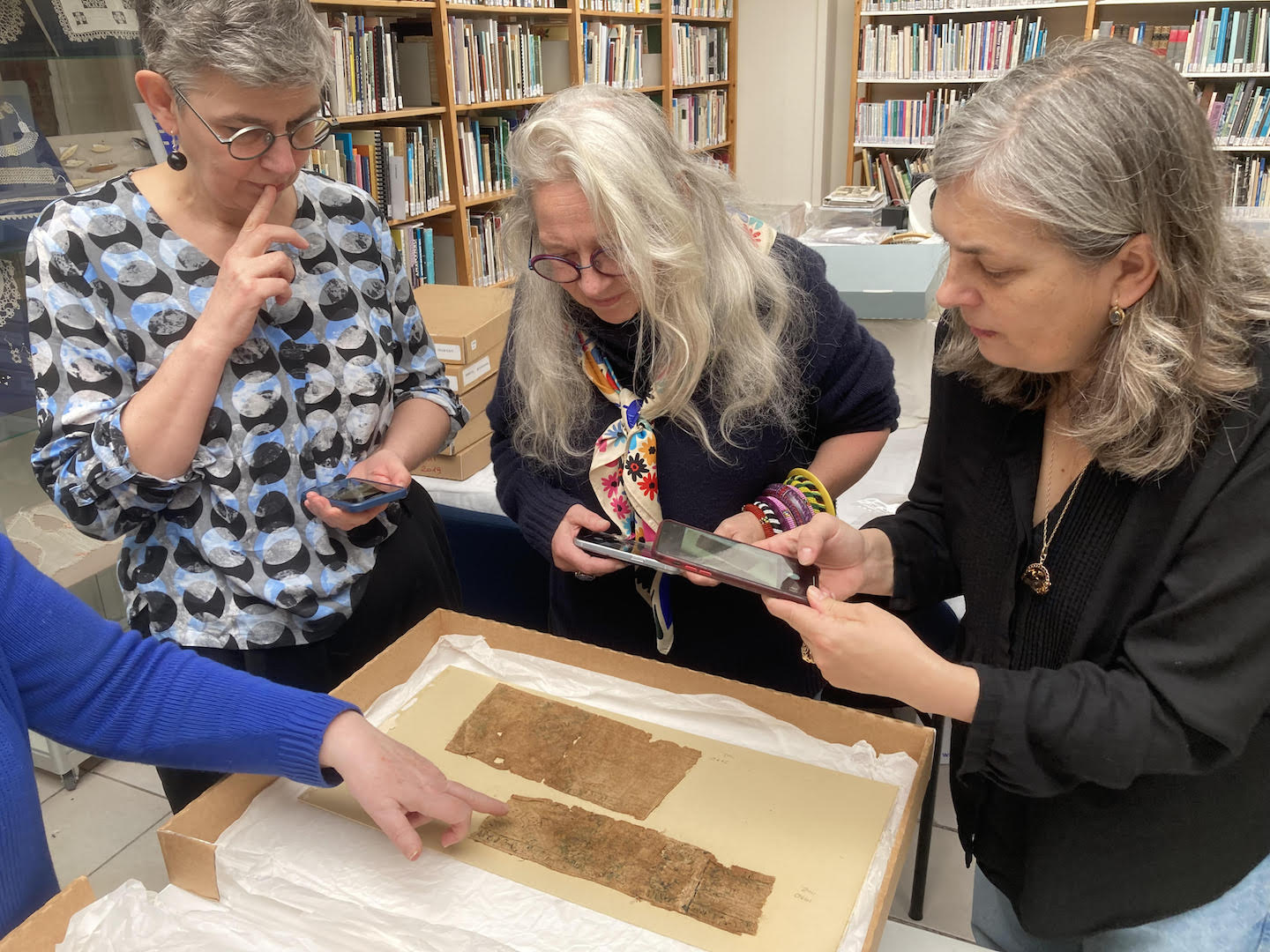 Polish delegation studies Byzantine-period fragments of embroidery from 6th/7th century AD, Egypt, from the TRC collection.These samples mainly date to between 10th – 14th century AD and come from the 1960s and 1970s excavations at the site. They were specifically intended for fibre and dye analysis purposes (which never took place, but this situation may soon be changing).
Polish delegation studies Byzantine-period fragments of embroidery from 6th/7th century AD, Egypt, from the TRC collection.These samples mainly date to between 10th – 14th century AD and come from the 1960s and 1970s excavations at the site. They were specifically intended for fibre and dye analysis purposes (which never took place, but this situation may soon be changing).
The Polish group have been working with a natural dyer in Poland to produce colours that are close to those depicted on the wall paintings, but with the obvious problem that paints are inorganic and mineral based, while the textile dyes are plant based. So are the colours depicted accurate?
It was a great relief to compare the Gebel Adda fragments with the modern, dyed textiles, they were very close! So the process of making reconstructions can move to the next phase.
Karel Innemée has very kindly agreed to write a TRC extended blog about the role of archaeological textiles, fragments and samples (such as those from Gebel Adda) in supporting and expanding our knowledge about historic textile techniques. Even though many of these pieces are very small, and some would not regard them as ‘museum worthy’ (whatever that means), such fragments can be of help to extend our knowledge of material culture and heritage in all its many forms.
Cooperation
Another part of the conversation was with Agnieszka Jacobson. We discussed how our two institutes can work together, including internships for students to come to Leiden, working on various projects, especially the TRC’s Embroidery Project (Bloomsbury, London). It is likely, for example, that the Polish embroidery chapter for volume 5 will be written with the help of the SWPS University and their connections. All being well, a visit to Warsaw can take place later in the year, to discuss these and other ideas and projects.
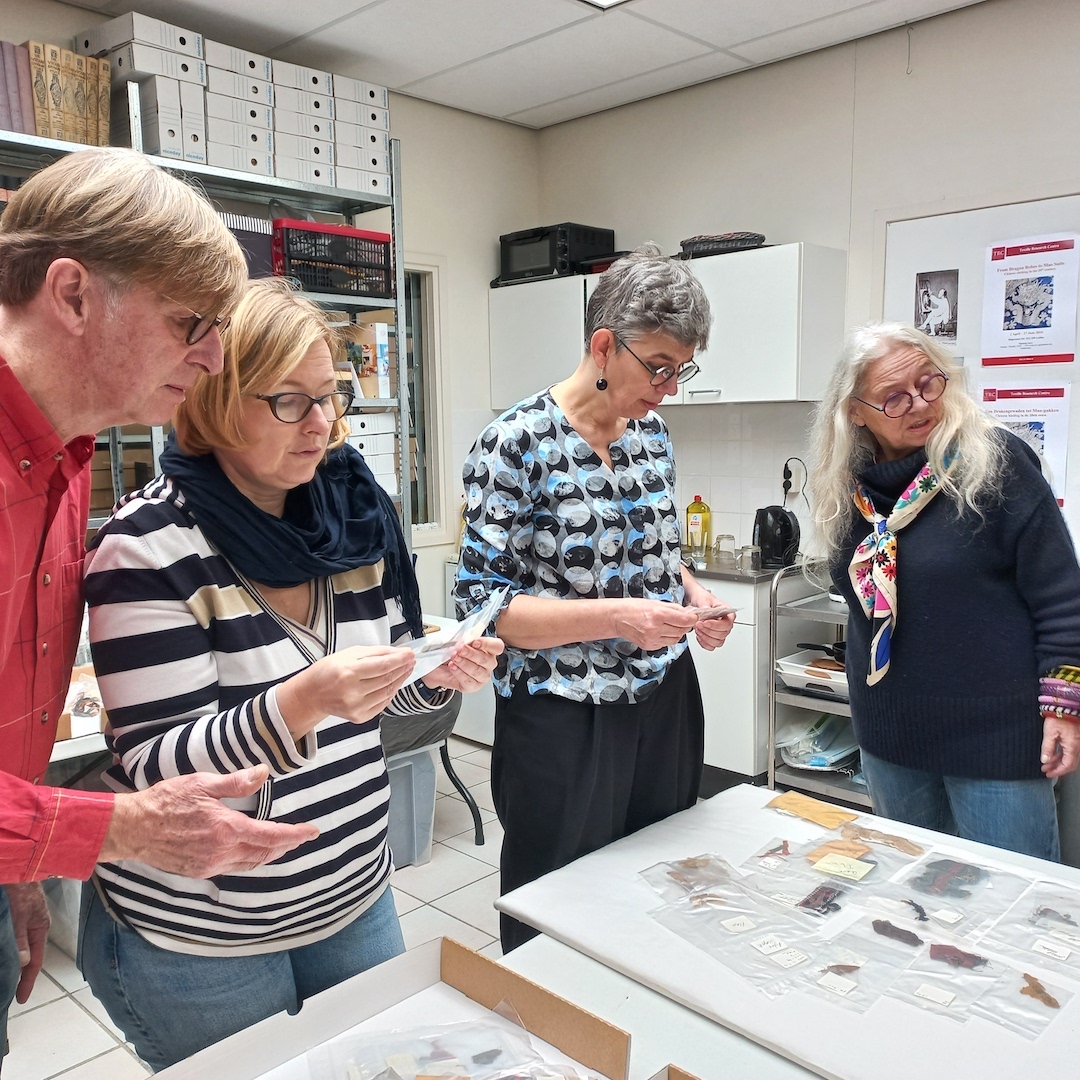 Karel Innemée (left) and Polish delegation comparing actual Jebel Adda textiles with replica dyes from Poland.We also discussed (briefly) the role of handling collections in the teaching of design students. As noted before, many modern design students and designers no longer have a direct knowledge of the textile forms they are working with. Everything is done via the computer screen – as stressed by Agnieszka: If the students want to draw a cloud they look online for an example, rather than out of the window!
Karel Innemée (left) and Polish delegation comparing actual Jebel Adda textiles with replica dyes from Poland.We also discussed (briefly) the role of handling collections in the teaching of design students. As noted before, many modern design students and designers no longer have a direct knowledge of the textile forms they are working with. Everything is done via the computer screen – as stressed by Agnieszka: If the students want to draw a cloud they look online for an example, rather than out of the window!
This is becoming a major problem at all levels (and not only for textiles). We really need in Europe (and elsewhere) to have more opportunities to encourage the practical-oriented teaching of textiles and fashion. The TRC Collection could and can provide an invaluable resource for their, and indeed other, students and professional designers.
So Agnieszka is going to look into Erasmus+ possibilities for our two institutes to actively work with each other to encourage textile education and skills in a variety of different forms and levels.
I think, however, one of the things I enjoyed most about today, was being able to talk with a professional group of people who immediately understood what the TRC is about, its approach, the importance of having a broad based collection that is geared towards culture rather than artificial political boundaries (ie thematic rather than regionally based). And indeed the importance of textiles and cloth for human history and not just for a few hundred years, but for thousands of years.










